

VÄRMLAND – Nothern Vänern
Skage Lighthouse
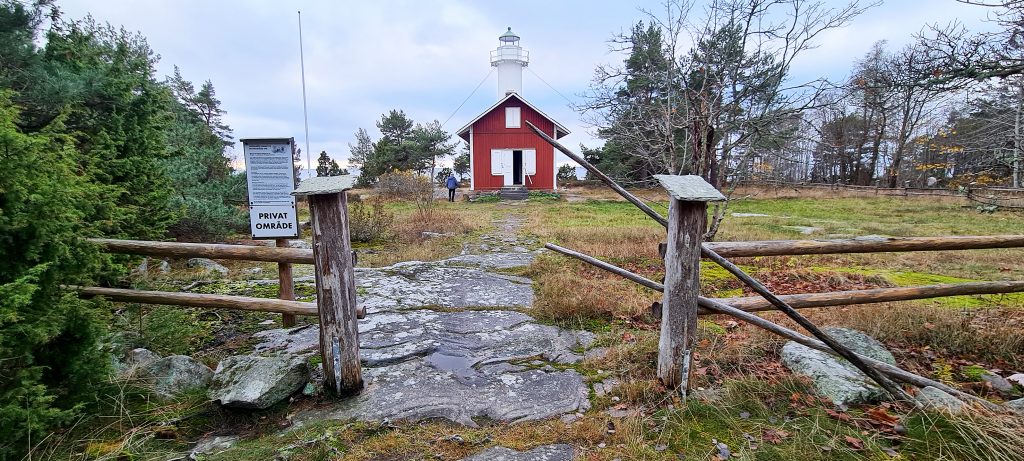
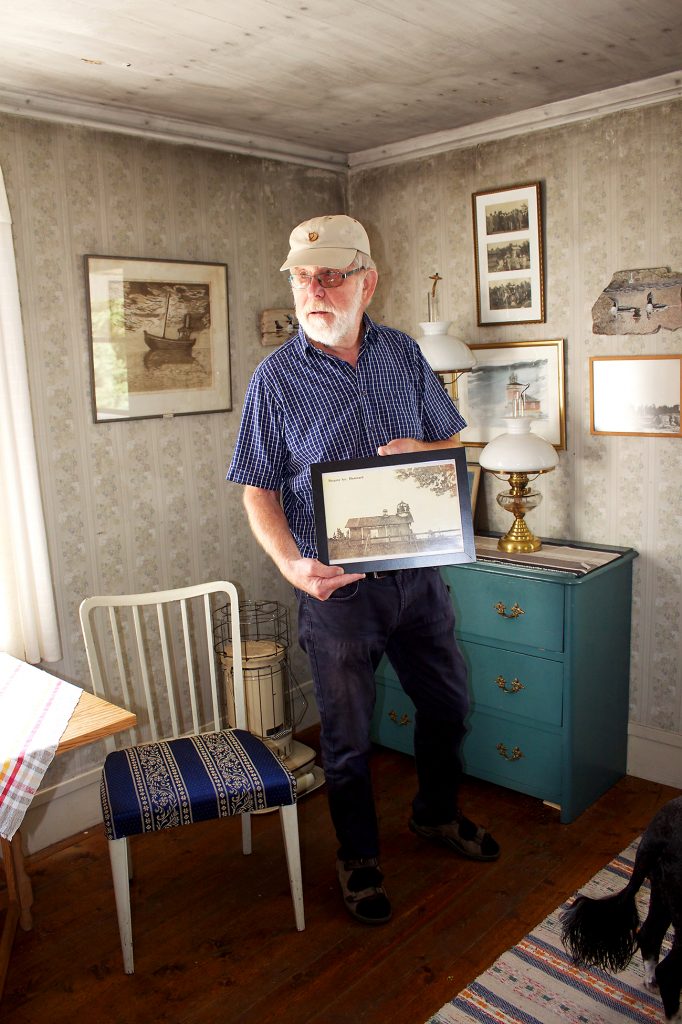
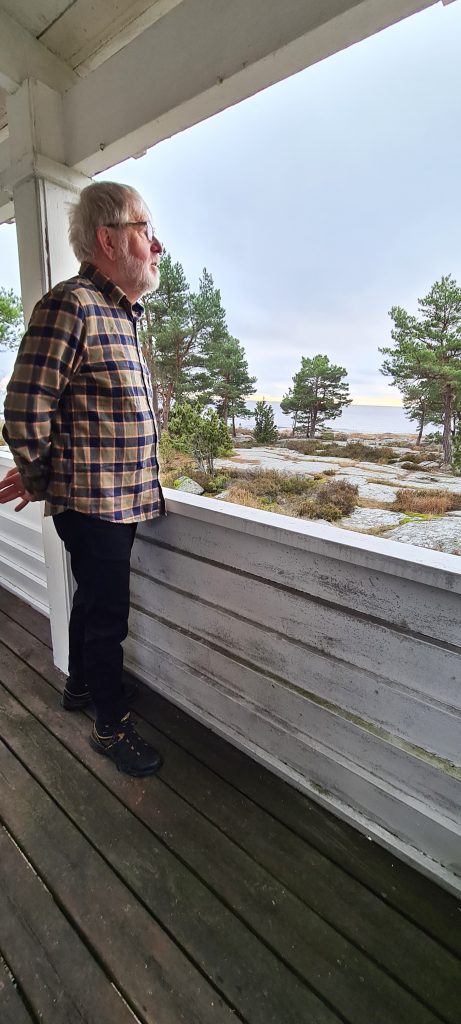
The tourist destination that is open just once a year
The southern tip of Hammarö is an eldorado all year round to birdwatchers and nature lovers. This is also the location of an exclusive tourist destination that can be looked upon but only visited by the public once a year. On the International Lighthouse Day.
Skage lighthouse on the southern tip of Hammarö was constructed in 1872, was closed down as early as 1932 and was saved by an exclusive society still active today.
In 2022 it will be 90 years ago that the Lighthouse Club bought and took it over.
-Our statutes say that our members are expected to have a genuine interest in the preservation and care for the landmark’s unique setting and also its cultural historical value. The members should also actively participate themselves – as much as they can – in the maintenance and care for the lighthouse, Jan-Erik Jontén tells us.
Once a year
He is one of 23 members. The club only permits between 20 and 25 members and it operates without any grants or contributions from the municipality.
Jan-Erik’s assignment is to function as a tour guide along with two other members, on the international lighthouse day in August. That is the only occasion on which the public has admission to the lighthouse.
The lighthouse towers like a white exclamation mark and it constitutes a historical and widely recognized landmark on the southern tip of Hammarö. And still today its service is of use to the small vessel traffic. We are talking about a place full of contrasts. The beauty of the glittering water in the summer turns into treacherous waters in the autumn when the storms come in.
Treacherous underwater rocks
The reason that the lighthouse was built was a group of treacherous underwater rocks with the funny names; the western, middle, and eastern pig.
-Anders G. Andersson was the general contractor that worked for Lake Vänern’s navigation management. He constructed the lighthouse in 1872 and he also became the first lighthouse-keeper. His signature is right there, Jan-Erik tells us and points to a spot above the kitchen door.
The original optics in the lighthouse was a parabolic mirror, 500 mm in diameter, clockwork with plumb and a kerosene lamp.
-It worked like a Mora-clock which means it needed to be wound up.
In early 20th century the combined lighthouse and dwelling house was expanded with a new hallway and also a new attic staircase that was placed on the gable side. In 1914 the tower was raised with 4 meters. There are 64 steps up to the top of the tower and the light sits at a height of 14 meters.
A tough life
-The lighthouse-keeper, his family and pets lived a tough life out here with only their one room and kitchen. They had no running water or electricity. They had to supplement their income by fishing and constructing boats.
Johan Olsson became the penultimate lighthouse-keeper. He started work in 1907 and passed away in 1930, just 49 years old. By then his son Sigvard had already been born out here. Lighthouse-keeper Karl Rudin took over the keeping of the light-house until it was closed down.
-The lighthouse was about to be demolished but a number of prominent citizens in Karlstad set out to save it so they started the Lighthouse club (wpr = without personal responsibility.)
Apart from the basic purpose of preserving and maintaining the lighthouse the club has developed into a society of friends with a lot of good times. Ever since the lighthouse came into the club’s possession it has been used by the members and their families. All the club members have their own keys and when they feel like it they can use the lighthouse as their private vacation house.
A cozy lighthouse-keeper meeting
-We open it up in April, have a haymaking feast in July, crayfish party in August and then we have what I think is the coziest of them all, the lighthouse-keeper meeting in November, lit up by kerosene lamps, Jan-Erik tells us.
Members also gather for workdays, inside the lighthouse as well as outside of it.
-Everyone has their own key so therefore we can use the lighthouse and the buildings in private whenever we wish to do so.
Skage Lighthouse is located in a beautiful and idyllic nature reserve in the northern part of Lake Vänern. Outside is just open water as far as the eye can see. The area is very popular for outdoor activities and a paradise for birdwatchers.
A bird paradise
Södra Store Holmen with Skage Lighthouse is often called the Lighthouse cape. It has been known for a long time to be a passageway to many birds. There are several bird ringing centres around here and Hammarö bird station is not far away from the southern tip. It was thanks to his interest in the outdoors that Jan-Erik Jontén came in contact with the Lighthouse club.
-I happened upon a handwritten note out here in the fall of 2002 where the Lighthouse club welcomed new members. I got in touch with the club and got accepted in 2003.
But not his wife.
-No, just one person per family can become a member.
Jan-Erik can really recommend an outing to the Lighthouse cape and the southern tip of Hammarö.
-A unique place that still bear a resemblance to the 19
th century. A wonderful area all year round. I have a picture from a winter storm where the ice sheets stood up sideways!
The southern tip of Hammarö is an eldorado all year round to birdwatchers and nature lovers. This is also the location of an exclusive tourist destination that can be looked upon but only visited by the public once a year. On the International Lighthouse Day.
Skage lighthouse on the southern tip of Hammarö was constructed in 1872, was closed down as early as 1932 and was saved by an exclusive society still active today.
In 2022 it will be 90 years ago that the Lighthouse Club bought and took it over.
-Our statutes say that our members are expected to have a genuine interest in the preservation and care for the landmark’s unique setting and also its cultural historical value. The members should also actively participate themselves – as much as they can – in the maintenance and care for the lighthouse, Jan-Erik Jontén tells us.
Once a year
He is one of 23 members. The club only permits between 20 and 25 members and it operates without any grants or contributions from the municipality.
Jan-Erik’s assignment is to function as a tour guide along with two other members, on the international lighthouse day in August. That is the only occasion on which the public has admission to the lighthouse.
The lighthouse towers like a white exclamation mark and it constitutes a historical and widely recognized landmark on the southern tip of Hammarö. And still today its service is of use to the small vessel traffic. We are talking about a place full of contrasts. The beauty of the glittering water in the summer turns into treacherous waters in the autumn when the storms come in.
Treacherous underwater rocks
The reason that the lighthouse was built was a group of treacherous underwater rocks with the funny names; the western, middle, and eastern pig.
-Anders G. Andersson was the general contractor that worked for Lake Vänern’s navigation management. He constructed the lighthouse in 1872 and he also became the first lighthouse-keeper. His signature is right there, Jan-Erik tells us and points to a spot above the kitchen door.
The original optics in the lighthouse was a parabolic mirror, 500 mm in diameter, clockwork with plumb and a kerosene lamp.
-It worked like a Mora-clock which means it needed to be wound up.
In early 20th century the combined lighthouse and dwelling house was expanded with a new hallway and also a new attic staircase that was placed on the gable side. In 1914 the tower was raised with 4 meters. There are 64 steps up to the top of the tower and the light sits at a height of 14 meters.
A tough life
-The lighthouse-keeper, his family and pets lived a tough life out here with only their one room and kitchen. They had no running water or electricity. They had to supplement their income by fishing and constructing boats.
Johan Olsson became the penultimate lighthouse-keeper. He started work in 1907 and passed away in 1930, just 49 years old. By then his son Sigvard had already been born out here. Lighthouse-keeper Karl Rudin took over the keeping of the light-house until it was closed down.
-The lighthouse was about to be demolished but a number of prominent citizens in Karlstad set out to save it so they started the Lighthouse club (wpr = without personal responsibility.)
Apart from the basic purpose of preserving and maintaining the lighthouse the club has developed into a society of friends with a lot of good times. Ever since the lighthouse came into the club’s possession it has been used by the members and their families. All the club members have their own keys and when they feel like it they can use the lighthouse as their private vacation house.
A cozy lighthouse-keeper meeting
-We open it up in April, have a haymaking feast in July, crayfish party in August and then we have what I think is the coziest of them all, the lighthouse-keeper meeting in November, lit up by kerosene lamps, Jan-Erik tells us.
Members also gather for workdays, inside the lighthouse as well as outside of it.
-Everyone has their own key so therefore we can use the lighthouse and the buildings in private whenever we wish to do so.
Skage Lighthouse is located in a beautiful and idyllic nature reserve in the northern part of Lake Vänern. Outside is just open water as far as the eye can see. The area is very popular for outdoor activities and a paradise for birdwatchers.
A bird paradise
Södra Store Holmen with Skage Lighthouse is often called the Lighthouse cape. It has been known for a long time to be a passageway to many birds. There are several bird ringing centres around here and Hammarö bird station is not far away from the southern tip. It was thanks to his interest in the outdoors that Jan-Erik Jontén came in contact with the Lighthouse club.
-I happened upon a handwritten note out here in the fall of 2002 where the Lighthouse club welcomed new members. I got in touch with the club and got accepted in 2003.
But not his wife.
-No, just one person per family can become a member.
Jan-Erik can really recommend an outing to the Lighthouse cape and the southern tip of Hammarö.
-A unique place that still bear a resemblance to the 19
th century. A wonderful area all year round. I have a picture from a winter storm where the ice sheets stood up sideways!
Keep safe while on the water this summer!
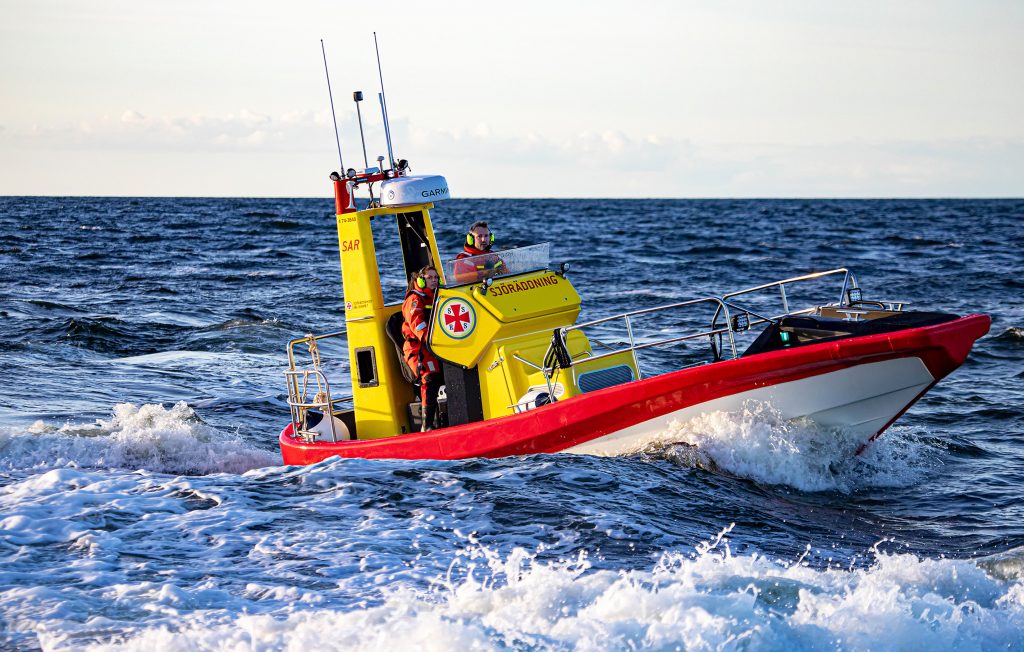
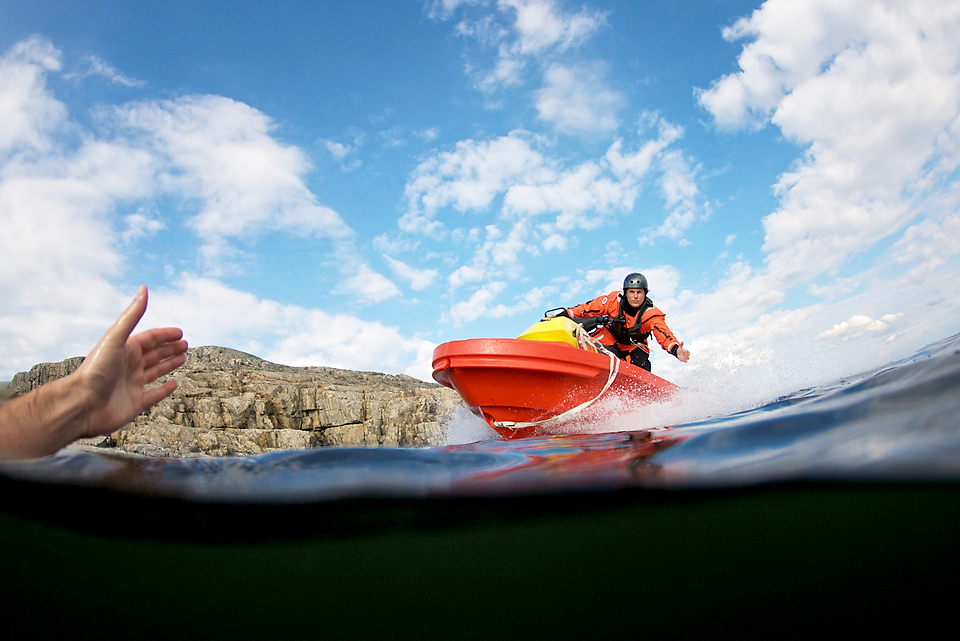
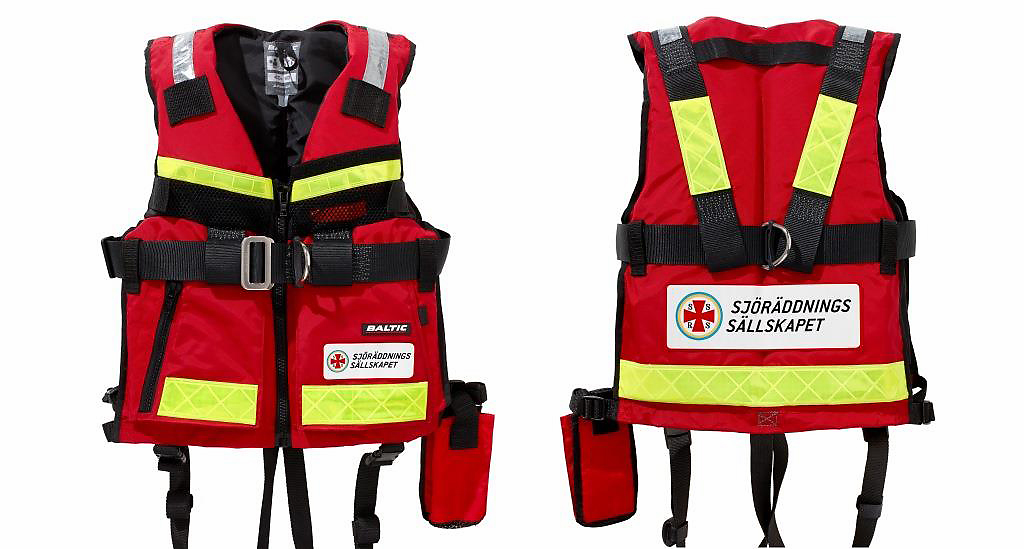
Every year accidents of various kinds occur with recreational boats in Swedish waters and according to the Swedish Transport Agency’s
statistics, 27 people died in these accidents in 2020. Many accidents could have been completely avoided and thus many lives could have been saved, for instance if they had worn a life jacket, something that most of us would consider a must. Of the 27 that perished, at least 17 of them did NOT wear a life jacket.
For the past 115 years, the Swedish Sea Rescue Society
has worked tirelessly – and completely without government funding – to try and prevent these accidents and to help out if they still occur. The
Sea Rescue Society currently has 74 sea rescue stations, more than 260 rescue vessels along our coasts and on the major lakes and connected to these are 2 400 volunteer crew members who are ready to take off on rescue missions around the clock. The Sea Rescue Society
has a vision of zero casualties on the water and therefore works to prevent accidents with education and information for all who are interested. Here are some of their best tips for a safe and enjoyable summer in the boat:
PREPARE YOURSELVES:
Get to know your boat! How does it work, where is everything?
Educate yourself! There are other rules that apply while on the water than on land. Make sure that several people on the boat have the knowledge and not just one.
Check the equipment! Not only anchors, fuel and such are important but also fire extinguishers, warm clothes and first aid for instance.
GENERAL MARITIME SAFETY:
Check the weather! Keep track of the weather forecast for the entire time you plan to be out.
Announce where you are going! Make sure someone on land knows where you plan to go and for how long you intend to be away.
Plan the trip! Map the route, get a chart and make sure you can navigate the route.
Make sure to be able to sound the alarm! If the boat does not have a VHF radio, make sure you keep a cell phone in a waterproof case so that you can sound the alarm even if you end up in the water.
Life jacket! Most important of all, make sure everyone on board wears a life jacket!
WHILE AT SEA:
Keep your distance! Mind your speed and keep your distance to both other boats and to land and shallows.
Be clear! Show clearly, preferably excessively, if you are planning a sharp turn or something similar.
Show consideration! Show consideration for others, both on boats and on land, for example by keeping track of the bow waves of your vessel.
Good seamanship! To be alone while at sea is not to your advantage. Good seamanship means to respect others and to be willing to help out. Mind your speed, be careful about people and the environment, help out in ports or if someone signals at sea.
Take care of yourself and consider the environment and fellow seamen when you take the boat out this year!
HAVE A PLEASANT SUMMER!
statistics, 27 people died in these accidents in 2020. Many accidents could have been completely avoided and thus many lives could have been saved, for instance if they had worn a life jacket, something that most of us would consider a must. Of the 27 that perished, at least 17 of them did NOT wear a life jacket.
For the past 115 years, the Swedish Sea Rescue Society
has worked tirelessly – and completely without government funding – to try and prevent these accidents and to help out if they still occur. The
Sea Rescue Society currently has 74 sea rescue stations, more than 260 rescue vessels along our coasts and on the major lakes and connected to these are 2 400 volunteer crew members who are ready to take off on rescue missions around the clock. The Sea Rescue Society
has a vision of zero casualties on the water and therefore works to prevent accidents with education and information for all who are interested. Here are some of their best tips for a safe and enjoyable summer in the boat:
PREPARE YOURSELVES:
Get to know your boat! How does it work, where is everything?
Educate yourself! There are other rules that apply while on the water than on land. Make sure that several people on the boat have the knowledge and not just one.
Check the equipment! Not only anchors, fuel and such are important but also fire extinguishers, warm clothes and first aid for instance.
GENERAL MARITIME SAFETY:
Check the weather! Keep track of the weather forecast for the entire time you plan to be out.
Announce where you are going! Make sure someone on land knows where you plan to go and for how long you intend to be away.
Plan the trip! Map the route, get a chart and make sure you can navigate the route.
Make sure to be able to sound the alarm! If the boat does not have a VHF radio, make sure you keep a cell phone in a waterproof case so that you can sound the alarm even if you end up in the water.
Life jacket! Most important of all, make sure everyone on board wears a life jacket!
WHILE AT SEA:
Keep your distance! Mind your speed and keep your distance to both other boats and to land and shallows.
Be clear! Show clearly, preferably excessively, if you are planning a sharp turn or something similar.
Show consideration! Show consideration for others, both on boats and on land, for example by keeping track of the bow waves of your vessel.
Good seamanship! To be alone while at sea is not to your advantage. Good seamanship means to respect others and to be willing to help out. Mind your speed, be careful about people and the environment, help out in ports or if someone signals at sea.
Take care of yourself and consider the environment and fellow seamen when you take the boat out this year!
HAVE A PLEASANT SUMMER!
Health, animals and nature on Jäverön!

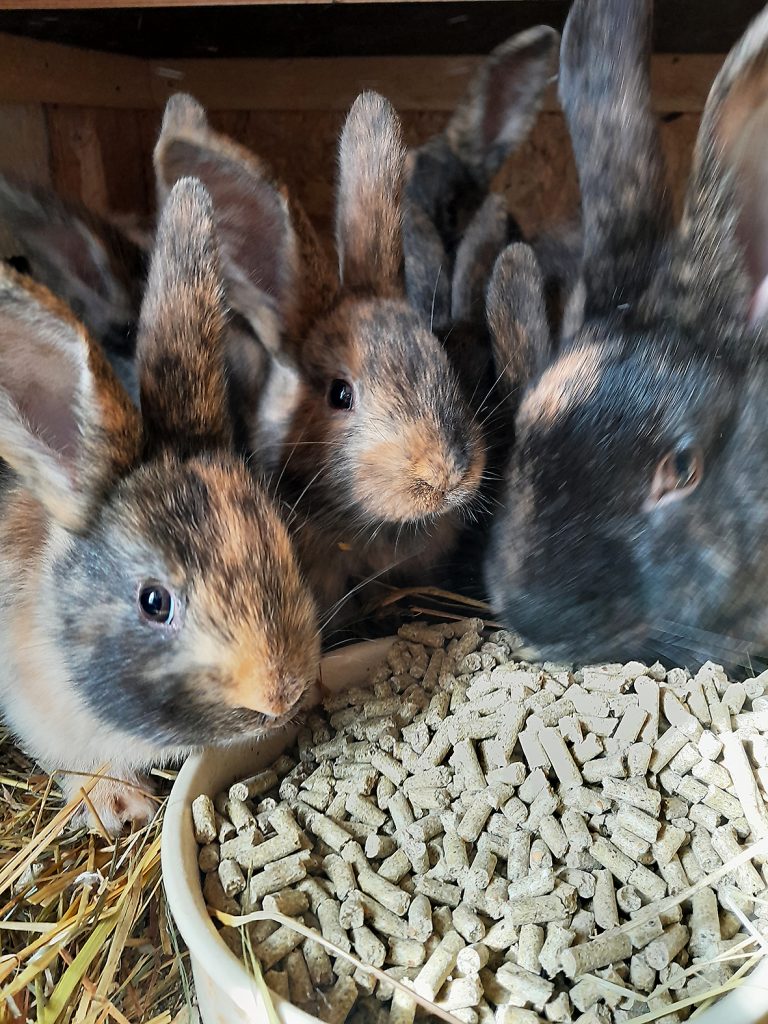
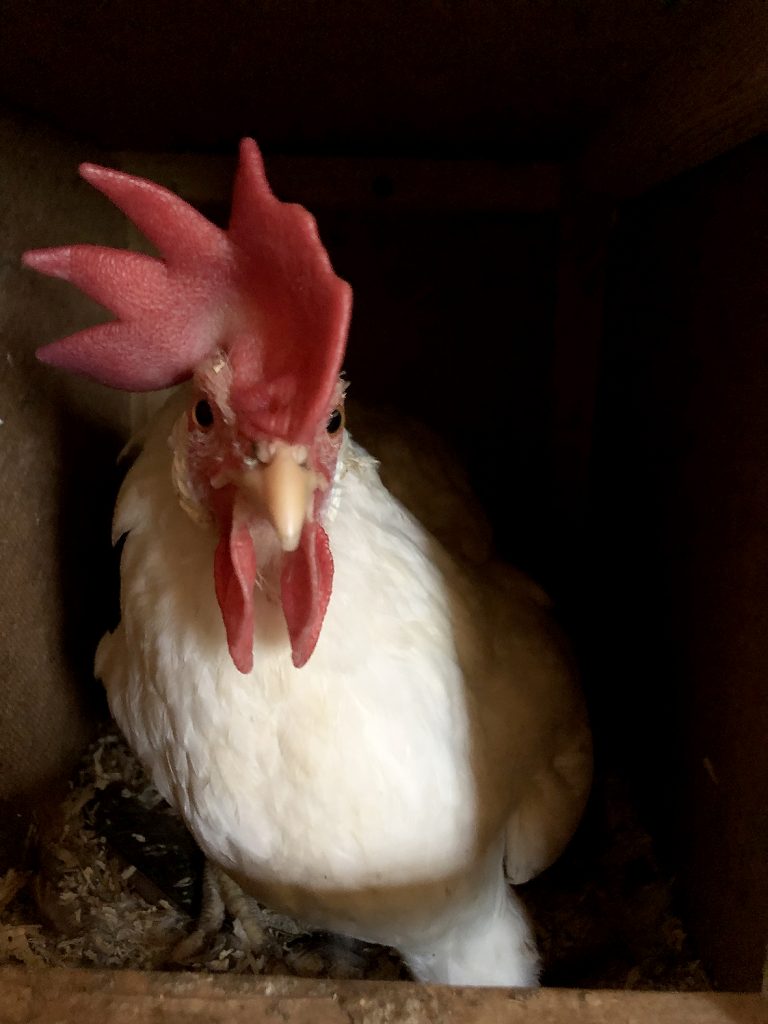
About a Swedish mile east of Karlstad and only 700 meters out in
Lake Vänern you find the scenic Jäverön. You get here by ferry, by Karlstad municipality’s boat buses (in the summer) or by your own boat. The island is about 900 hectares in size and here you will find both agricultural and grazing land, meadows, cliffs and sandy beaches. Only about 10 people live on the island all year round, but in the summer the number rises to several hundred when the many vacation homes are inhabited.
Some of those who live permanently on the island are Anders Ekblom and Susanne Öhrström who run Jäverö Farm. In addition to agriculture, there are some “touristy” activities. It is possible to rent a pony and lead the children around for an hour. Or you can mount a bigger horse for rent and take a ride in the forests and fields. The couple also runs a small farm shop where they sell local produce from their own farm; eggs, meat boxes, honey etc. If you visit the summer café up by the farm, you have the opportunity to meet some of all the animals that live there. Maybe the rabbits will be a favorite? If you want to stay longer, it is possible to book accommodation for a night or a week. There are also some campervan pitches available. There is also room for your quadruped friends, if you want to bring your dog or cat. Or even bring your horse for that matter! There is the possibility of horse boarding when you come for a week’s holiday and summer grazing is also possible if needed!
On Jäverön you will also find Magasinet, a beautiful newly restored storehouse building that today is used for courses and other events. Mats Wensmark and Anna-Lena Sundin from Karlstad are in charge of the business. You can book Magasinet Jäverön for your own activities, such as planning days, working group meetings and wellness activities. On these occasions, homemade vegetarian food is served with home-baked bread and you can also book activities and lectures on the theme of health and sustainable working life, such as wellness guidance, to your own liking. In collaboration with the Yoga School in Karlstad, yoga and hiking are also arranged for.
Lake Vänern you find the scenic Jäverön. You get here by ferry, by Karlstad municipality’s boat buses (in the summer) or by your own boat. The island is about 900 hectares in size and here you will find both agricultural and grazing land, meadows, cliffs and sandy beaches. Only about 10 people live on the island all year round, but in the summer the number rises to several hundred when the many vacation homes are inhabited.
Some of those who live permanently on the island are Anders Ekblom and Susanne Öhrström who run Jäverö Farm. In addition to agriculture, there are some “touristy” activities. It is possible to rent a pony and lead the children around for an hour. Or you can mount a bigger horse for rent and take a ride in the forests and fields. The couple also runs a small farm shop where they sell local produce from their own farm; eggs, meat boxes, honey etc. If you visit the summer café up by the farm, you have the opportunity to meet some of all the animals that live there. Maybe the rabbits will be a favorite? If you want to stay longer, it is possible to book accommodation for a night or a week. There are also some campervan pitches available. There is also room for your quadruped friends, if you want to bring your dog or cat. Or even bring your horse for that matter! There is the possibility of horse boarding when you come for a week’s holiday and summer grazing is also possible if needed!
On Jäverön you will also find Magasinet, a beautiful newly restored storehouse building that today is used for courses and other events. Mats Wensmark and Anna-Lena Sundin from Karlstad are in charge of the business. You can book Magasinet Jäverön for your own activities, such as planning days, working group meetings and wellness activities. On these occasions, homemade vegetarian food is served with home-baked bread and you can also book activities and lectures on the theme of health and sustainable working life, such as wellness guidance, to your own liking. In collaboration with the Yoga School in Karlstad, yoga and hiking are also arranged for.
Trolls and culture in Mariebergsskogen
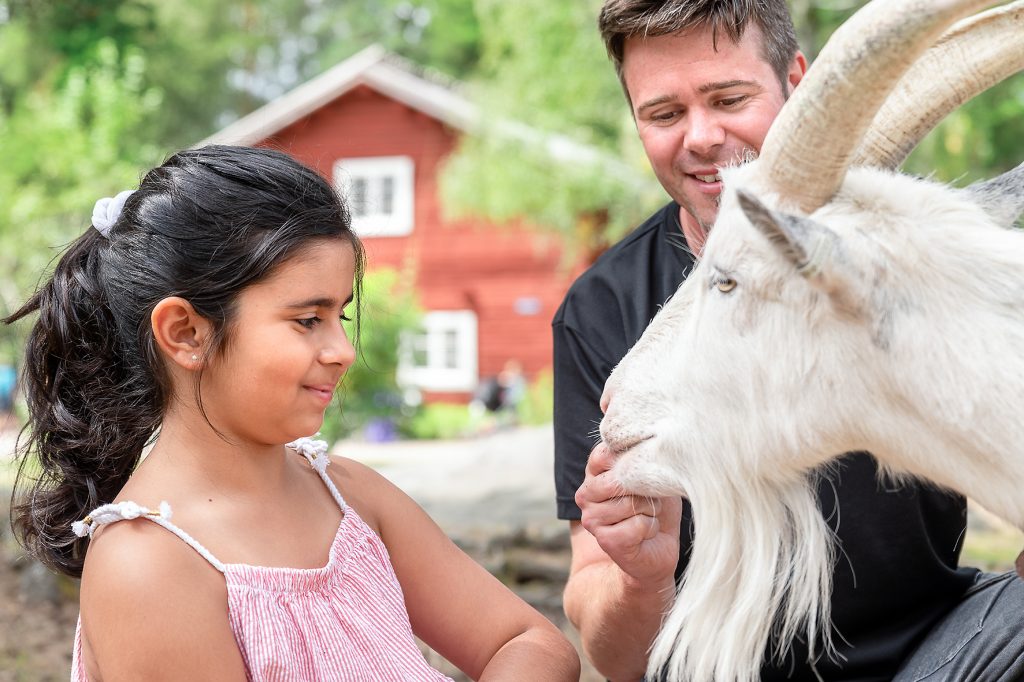
Mariebergsskogen (the Marieberg Forrest) is a paradise for all children. There is a unique play garden with a gazebo, a play forrest, a stone maze and illusion mirrors. There are also playgrounds with zip lines, climbing equippment and swings. On hot days it is possible to cool down or just swim at the sandy beach which faces south. Mariebergsskogen is full of activities and events for both children and adults.
Culture is important in keeping a city park alive. This year the popular trolls are back, ready to take you into the forrest on a Troll hike. Between July 9th and 29th, the Värmlands Theatre moves onto the open air theatre showing The Legend of Treasure Island.
If you love live music you can look forward to concerts with Ulf Lundell on June 18th, We who love the 90’s on July 15th, MissLi, Uggla and Petter on July 16th, Lars Winnerbäck on July 30th, charity concert Heartbeat Karlstad on August 6th and Tomas Ledin on August 11th. And just think about all the traditions we have in a year! At Mariebergsskogen Valborg, Easter, Sweden National Day and Midsummer are all celebrated but also thematic days like Apple Day, Animal Day and Beekeeper Day.
This years marks the 20 year anniversary of Naturum Värmland. At the exhibition of the nature of Värmland you can listen to the strange sounds of fish, pat bear pelt and learn about our most common birds. You can be sure that there is always something going on, like a treasure hunt, a nature hike or a lecture and there are always different temporary exhibitions.
The staff gladly point you in the right direction for an exiting excursion. All year around you can take a quiz walk with new questions every wek.
Welcome to Mariebergsskogen!
Culture is important in keeping a city park alive. This year the popular trolls are back, ready to take you into the forrest on a Troll hike. Between July 9th and 29th, the Värmlands Theatre moves onto the open air theatre showing The Legend of Treasure Island.
If you love live music you can look forward to concerts with Ulf Lundell on June 18th, We who love the 90’s on July 15th, MissLi, Uggla and Petter on July 16th, Lars Winnerbäck on July 30th, charity concert Heartbeat Karlstad on August 6th and Tomas Ledin on August 11th. And just think about all the traditions we have in a year! At Mariebergsskogen Valborg, Easter, Sweden National Day and Midsummer are all celebrated but also thematic days like Apple Day, Animal Day and Beekeeper Day.
This years marks the 20 year anniversary of Naturum Värmland. At the exhibition of the nature of Värmland you can listen to the strange sounds of fish, pat bear pelt and learn about our most common birds. You can be sure that there is always something going on, like a treasure hunt, a nature hike or a lecture and there are always different temporary exhibitions.
The staff gladly point you in the right direction for an exiting excursion. All year around you can take a quiz walk with new questions every wek.
Welcome to Mariebergsskogen!
Gravity is being challenged in Säffle´s Water tower
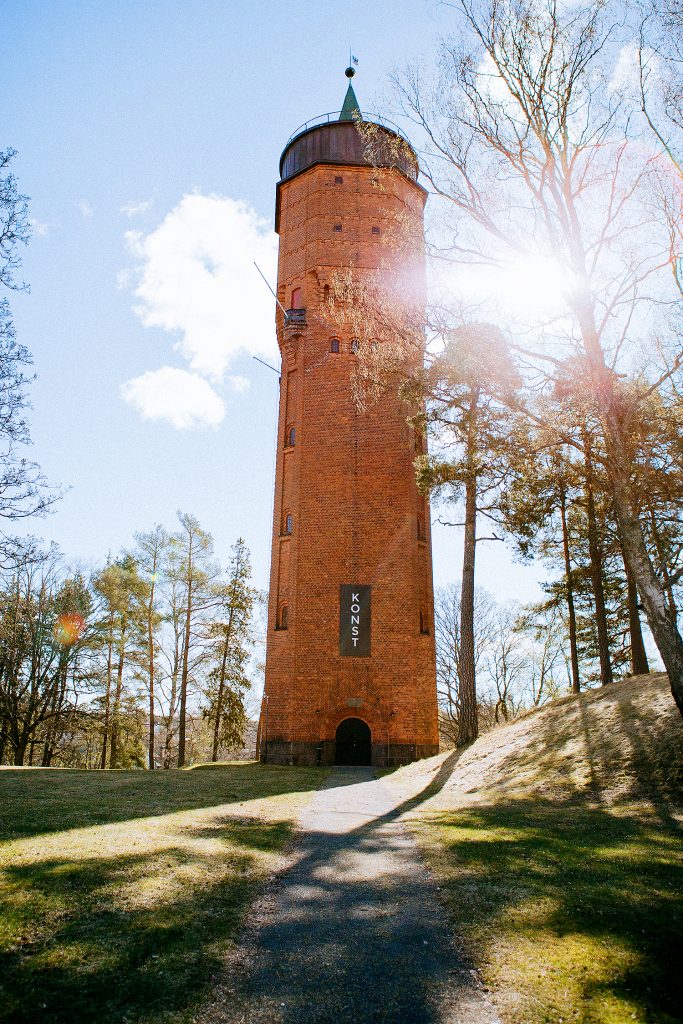
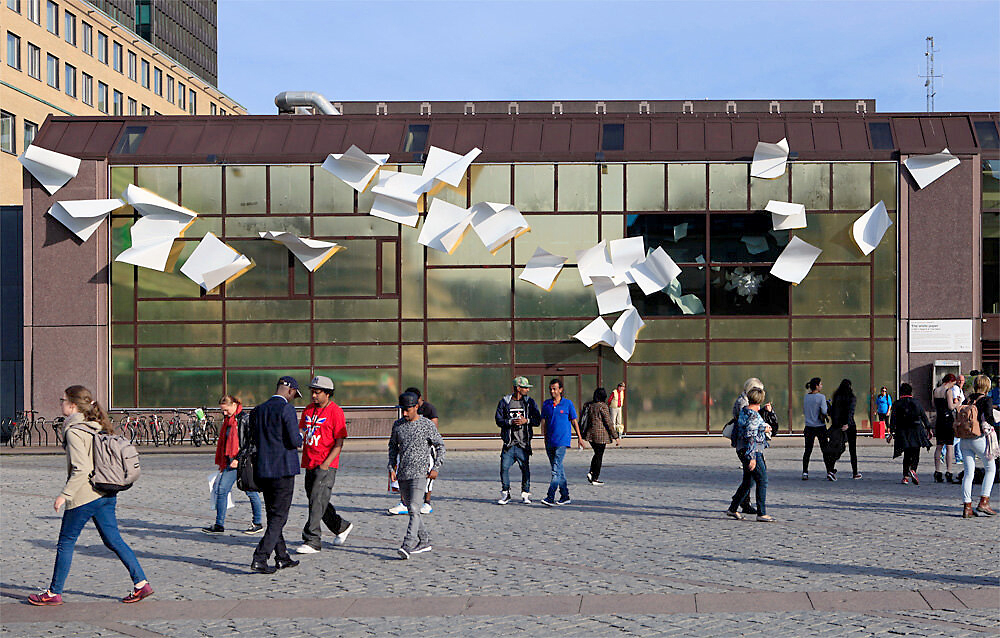
Säffle´s beautiful old Water tower was designed by the same architect who ”created” Stockholm´s Concert Hall (Konserthuset) and the Matchstick Museum (Tändsticksmuseet), Ivar Tengbom. Even though it was taken out of use already in 1958 the water tower has became a symbol of the city and just in time for the 100th anniversary day in 2014 the building was totally renovated. Two years later it was reopened as an art gallery and has since then presented new exciting art of different kinds.
This year is it the innovating duo Theo Ågren and Björn Hegardt being exhibited at the Water Tower. Theo Ågren and Björn Hegardt, who both are educated at Trondheim Academy of Fine Arts, often collaborate with different forms of installations. Their work treat different phenomenon such as black holes, gravity and whirlwinds, often in combination with a site-specific theme. With a mix of humour and seriosity they show interiors which challenge gravity.
The artists are interested in the unique room and its boundaries, both visually and contextually. The for Säffle current artistic idea/work of art with the title ”Stormens öga” is a site specific work of art which challenges gravity, a frozen moment.
The vernisage is taken place in June the 11th.
This year is it the innovating duo Theo Ågren and Björn Hegardt being exhibited at the Water Tower. Theo Ågren and Björn Hegardt, who both are educated at Trondheim Academy of Fine Arts, often collaborate with different forms of installations. Their work treat different phenomenon such as black holes, gravity and whirlwinds, often in combination with a site-specific theme. With a mix of humour and seriosity they show interiors which challenge gravity.
The artists are interested in the unique room and its boundaries, both visually and contextually. The for Säffle current artistic idea/work of art with the title ”Stormens öga” is a site specific work of art which challenges gravity, a frozen moment.
The vernisage is taken place in June the 11th.